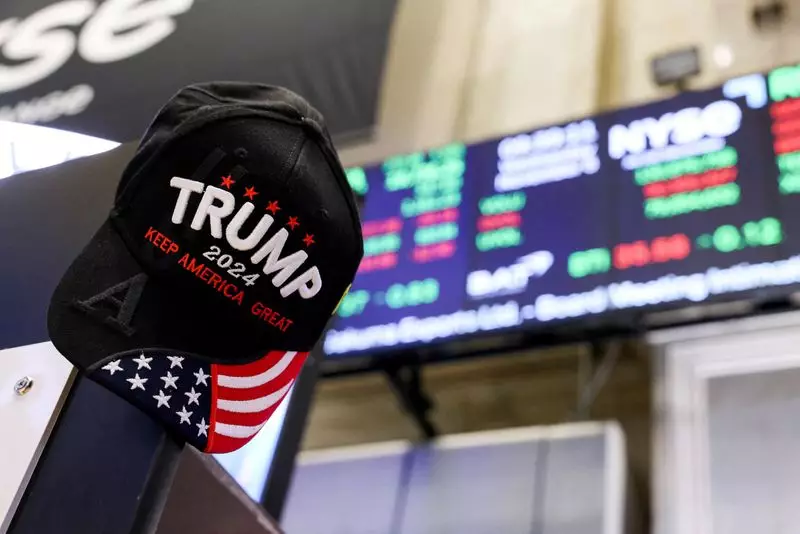As the week comes to a close, futures for U.S. stock indexes displayed a measured response, indicating a sense of caution throughout Wall Street as traders digested a mix of economic data and political developments. On the verge of what seemed to be the second consecutive week of gains for major indexes, this relative stability sharply contrasts with the backdrop of ongoing uncertainty regarding the trade policies posed by the Trump administration. Market participants, ever vigilant, remain keenly aware of the potential implications that tariffs may have on both domestic and international economic landscapes.
The mention of tariffs has dominated discussions as President Trump has alluded to new measures several times over the course of the week, yet clarity in terms of specific policies remains elusive. An initial announcement regarding tariffs on trade partners such as Mexico, Canada, China, and the European Union has been suggested for February 1st, while comprehensive plans could be revealed by April 1st—upon the completion of reviews by federal agencies. This ambiguity leaves investors in a precarious position, uncertain of the actual impacts on inflation and the pace of interest rate adjustments by the Federal Reserve.
Analysts have expressed concern over the possibility of an escalating trade war, which could ultimately result in added inflationary pressures alongside a tempering of economic growth. Mark Haefele, the chief investment officer for global wealth management at UBS, has articulated a base case scenario, assigning a 50% likelihood of an increase in the effective U.S. tariff rate on China to 30%, paired with retaliatory measures from Beijing. This prospect contributes to a broader apprehension among market participants, complicating investment strategies and forecasts.
Meanwhile, the Federal Reserve is expected to maintain its current interest rates during its meeting next week as organizations, including the Fed itself, continue to weigh the intricacies of the evolving economic conditions. Investors will be looking closely at consumer sentiment evaluations and manufacturing activity reports due later today, seeking insights that could forecast market behavior in the coming weeks.
In the premarket trading session, significant movements among individual stocks caught the attention of investors. Boeing, facing serious struggles, saw its shares drop by 1.6% after indicating a foreseen loss of approximately $4 billion in the fourth quarter. As the company gears up to report its quarterly earnings on Tuesday, the responses reflect a broader caution in the market, especially for entities with high public visibility and reliance on favorable economic conditions.
Simultaneously, the S&P 500 had recently reached a record high—a milestone achieved for only the second time in recent months—on the back of positive sentiment stemming from Trump’s address at the World Economic Forum in Davos, Switzerland. His call for tax reductions and lower oil prices resonated well and temporarily lifted market spirits, contributing to a notable uptick in stock prices as a result.
However, not all companies followed suit; Texas Instruments, for example, forecasted a lower-than-expected profit for the first quarter, resulting in a 3.7% drop in its share price. Compounding this reality, American Express reported a significant jump in quarterly profit yet saw its stock fall by 2.6% following the announcement.
The Road Ahead
As Wall Street looks ahead, next week promises a flurry of quarterly earnings reports from major industry players, including technology giants like Microsoft, Apple, Meta, and Tesla. These forthcoming results will be pivotal in shaping market trajectories and investor outlooks.
Furthermore, U.S.-listed shares of Chinese companies demonstrated a more robust performance, notably with gains from JD.com, Xpeng, and Alibaba after Trump implied that an amicable resolution to tariff conflicts could be on the horizon. The results reflect both the resilience of these corporations and the complexity of the international trade environment.
As U.S. stock futures navigate a fork in the road amid political and economic uncertainties, it becomes apparent that investor focus will remain fixed on the interplay between trade policy clarity, corporate earnings, and underlying economic trends that can forecast market movements moving forward.

